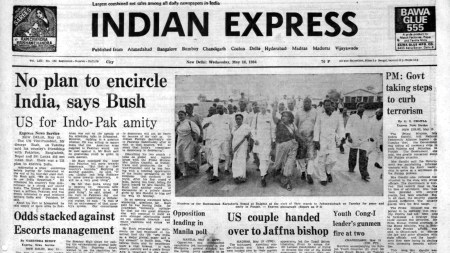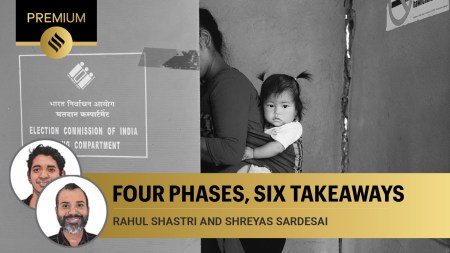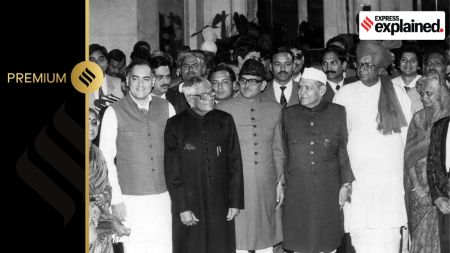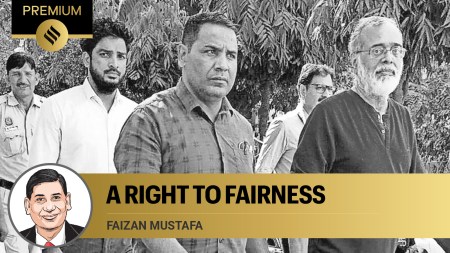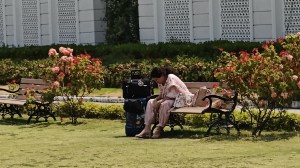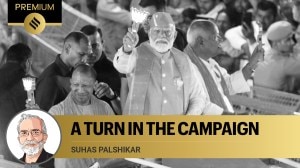- India
- International
Telangana statehood day: A history of the state’s formation, in three parts
What is today Telangana was earlier a part of the erstwhile Hyderabad State, then merged with Andhra to form Andhra Pradesh before finally getting statehood in 2014.
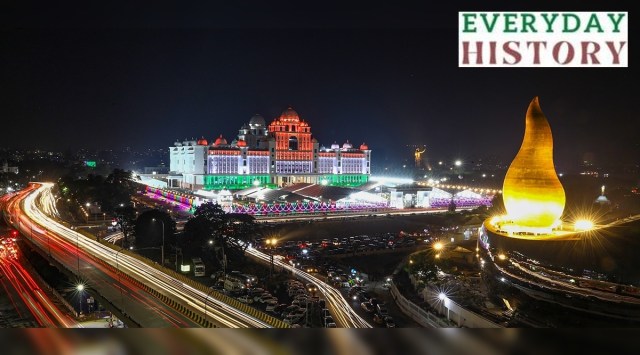 Hyderabad: Dr Br Ambedkar Telangana Secretariat illuminates with tricolours on the eve of 10th Telangana Formation Day celebration, in Hyderabad, Thursday, June 1, 2033. (PTI Photo)
Hyderabad: Dr Br Ambedkar Telangana Secretariat illuminates with tricolours on the eve of 10th Telangana Formation Day celebration, in Hyderabad, Thursday, June 1, 2033. (PTI Photo) With assembly elections just months away, political parties across the board are celebrating the 9th anniversary of Telangana’s statehood today (June 2).
At the forefront of the celebrations has been K Chandrashekhar Rao, popularly known as KCR, Telangana’s sitting chief minister and foremost leader of its movement for statehood. “My best wishes to all the people on this auspicious occasion … Let us celebrate the history of 60 years of struggle and ten years of progress of Telangana which we dreamed of and fought for,” he said.
Telangana, the newest state of India, has a complex history. Pre-Independence, it was a part of the princely state of Hyderabad. While there were talks of statehood in the 1950s, the region was eventually merged with the adjoining Andhra State to form Andhra Pradesh. Finally, in 2014, after decades of struggle, Telangana was carved out of the erstwhile Andhra Pradesh.
We explore Telangana’s path to statehood.
PART I: Princely State of Hyderabad, post-independence Hyderabad State
Present-day Telangana comprised the south and south-east Telugu-speaking regions of the Princely State of Hyderabad. The city of Hyderabad itself lay at the heart of the region, but unlike the areas around it, was dominated by the Urdu-speaking Muslim elite. Ruled by Nizam Osman Ali Khan, Hyderabad was among the largest and most prosperous princely states in the country.
In 1945, a communist-supported rebellion broke out in Telangana against the prevailing jagirdari (land-revenue) system. The Nizam’s response was brutal, unleashing a local militia, known as the Razakars, on the protesting peasants. Over the next few years, the Razakars committed numerous atrocities on Telangana’s population, and grew increasingly dominant in the state’s politics.

After Independence and the Partition in 1947, the Nizam of Hyderabad was unwilling to accede to India, like most other princely states had done, even after multiple rounds of discussion with Sardar Patel’s States Ministry. In the meantime, the Razakars under Kasim Razvi, terrorised the population, lest any attempts to overthrow the Nizam be made.
In order to usher in a modicum of stability in the state, India signed the Standstill Agreement with Hyderabad in November 1947, which stated that all administrative agreements that were in place between the Nizam and the British Crown would continue between the Nizam and India.
However, almost instantly, the terms of the agreement were violated by the Nizam. Not only did he let the Razakars run amok, he also restricted exports of precious metals to India, began negotiating with Pakistan, and stopped accepting the Indian rupee as legal tender. The Razakars even began carrying out “border raids” in neighbouring states.
As the state started falling into anarchy, India intervened militarily, launching “Operation Polo” in September 1948. Within a week, India had taken control of Hyderabad’s administration.
On January 26, 1951, when India became a republic, Hyderabad was accorded the status of a Part-B state, with the Nizam as the Rajpramukh and an elected chief minister. As history would have it, this state lasted less than six years.
PART II: Linguistic reorganisation and the creation of Andhra Pradesh
The erstwhile Madras state was huge, covering areas which spoke all the major languages of South India. In 1952, Potti Sriramalu went on a fast-unto-death demanding a separate Telugu state. He died after 56 days, triggering unrest across the region and eventually leading to the formation of the Andhra State out of the north and north eastern regions of the Madras state in 1953.
Moreover, Sriramalu’s death made the government seriously reconsider its position on linguistic states. The States Reorganisation Committee came into existence in 1953 and submitted its report two years later. Notably, it recommended that Hyderabad be reorganised linguistically – the Marathi-dominant Marathwada would be integrated into the bilingual Bombay state and south western Kannada-dominant districts would be integrated into the Mysore state.
What was contentious, however, was the status of the Telugu-dominant Telangana region. While Andhra wanted to merge with Telangana to create a united Vishalandhra, the SRC itself did not favour this, instead recommending Telangana be a separate state till at least 1961, when it would be given the opportunity to voluntarily merge with Andhra, if it so wished.
But the States Reorganisation Act passed in 1956 ignored this recommendation, merging Andhra State and Telangana into a single state called Andhra Pradesh, with Hyderabad as the capital. For some, like KCR, this was the point where a struggle for a separate Telangana state began.
PART III: The struggle for Telangana and the creation Telangana State
However, the sense of Telangana as a separate entity predated even Independence. Under the rule of the Nizam, the Telangana region had in-force Mulki Rules – domicile rules which ensured that only native residents were able to get government jobs in the region.
Since Independence, protests regularly broke out in Telangana demanding the strict adherence to these rules, the first one being in 1952. However, it was in January 1969, after the creation of Andhra Pradesh, that the region witnessed its most widespread protests yet. While the government sprung to action, promising to “transfer all non-Telangana employees holding posts reserved for Telangana domiciles”, the issue refused to die down. The protests gave birth to the Telangana Praja Samiti, which called for a separate Telangana state. Over the next few years, Mulki Rules were at the centre of protests as well as legal cases.
Finally, in September of 1973, Indira Gandhi initiated the 32nd Amendment to the Constitution, which declared that Andhra Pradesh would be divided into 6 zones, with reservation for jobs being decided on the basis of zones. As a result, the original Mulki Rules Act was repealed, and the movement for Telangana lost some steam.
It would finally be revived by KCR in 2001. A member of the Telugu Desam Party (TDP), he resigned and established his own political party – the Telangana Rashtra Samithi (TRS) with the singular aim of creating a new state of Telangana with Hyderabad as its capital.
While his performances in polls were underwhelming, the sudden death of Andhra Pradesh’s Chief Minister Y S Rajsekhara Reddy of the Congress in 2009, presented an opportunity to KCR. Reddy was the tallest leader of Andhra Pradesh at the time and post his death, political turmoil ensued. On November 29, 2009, KCR began a fast-unto-death demanding statehood. The Congress, which at the time was also under pressure nationally, relented within 10 days – promising the creation of the state of Telangana.
After extensive discussion on the specifics of the state boundary and the choice of capital (for the new Andhra State), Telangana came into existence around four and a half years later, in 2014. KCR was the first chief minister and Hyderabad was chosen the joint capital of both Andhra and Telangana for a period of ten years, after which Andhra would have to shift its capital elsewhere.
More Explained
EXPRESS OPINION
May 18: Latest News
- 01
- 02
- 03
- 04
- 05



